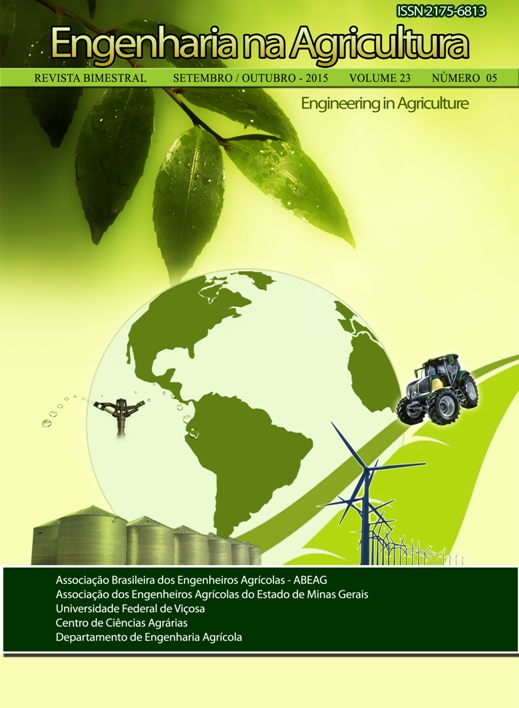PHYSICS, CHEMICAL AND RHEOLOGICAL VARIABLES OF THE INTEGRAL MANGO CV. HADEN PULP - DOI: 10.13083/1414-3984/reveng.v23n5p397-405
DOI:
https://doi.org/10.13083/reveng.v23i5.598Keywords:
Mangifera indica L., viscosidade, fluido não newtoniano, pseudoplásticoAbstract
This study aimed to determine physical, chemical and rheological variables of the integral pulp of mango cv. Haden. Mangos of the Haden variety from Petrolina – PE were pulped and then proceeded to physical and chemical analysis of total solids; total sugars, reducing and non-reducing; ashes; water insoluble solids; crude fiber and pectin, and rheological analysis of apparent viscosity at different speeds of rotation for the calculation of shear stresses and strain rates. In general, the physical and chemical parameters measured showed up in desired patterns for the manufacture of agro-industrial products and according to the Brazilian legislation fruit pulp. The pulp Haden sleeve showed high levels of total sugars and presented typical rheological behavior of non-Newtonian and pseudoplastic fluids, i.e., decrease in apparent viscosity with an increase in the viscometer speed. It was observed, in percentage terms, that a decrease in apparent viscosity provided by the viscometer increase in rotation speed of 0.5 to 5.0 rpm was approximately 82.70%; the rate of 0.5 to 120 rpm there was a decrease of around 98.15%. Then, models were adjusted to the rheological Power Law, Herschel-Bulkley and Mizrahi-Berk were fitted to the experimental data shear stress curve as a function of strain rate, obtaining coefficients of determination (R2) greater than 0.99 and average percentage deviations (P) lower than 3.6% in any of the models. Although, there is the possibility of using any of these to represent the rheological behavior of the Haden mango pulp, it is recommended to use the Mizrahi-Berk model to be the one with the lowest P and the highest R2.Downloads
Downloads
Published
How to Cite
Issue
Section
License
Authors who publish with this journal agree to the following terms:
The author(s) authorize(s) the publication of the text in the journal;
The author(s) ensure(s) that the contribution is original and unpublished and that it is not in the process of evaluation by another journal;
The journal is not responsible for the views, ideas and concepts presented in articles, and these are the sole responsibility of the author(s);
The publishers reserve the right to make textual adjustments and adapt texts to meet with publication standards.
From submission, the author is fully conceding the paper's patrimonial rights to the publication, but retaining the owner of its moral rights (authorship and paper's identification) according to Creative Commons Attribution-Noncommercial.








 Licensed by
Licensed by 